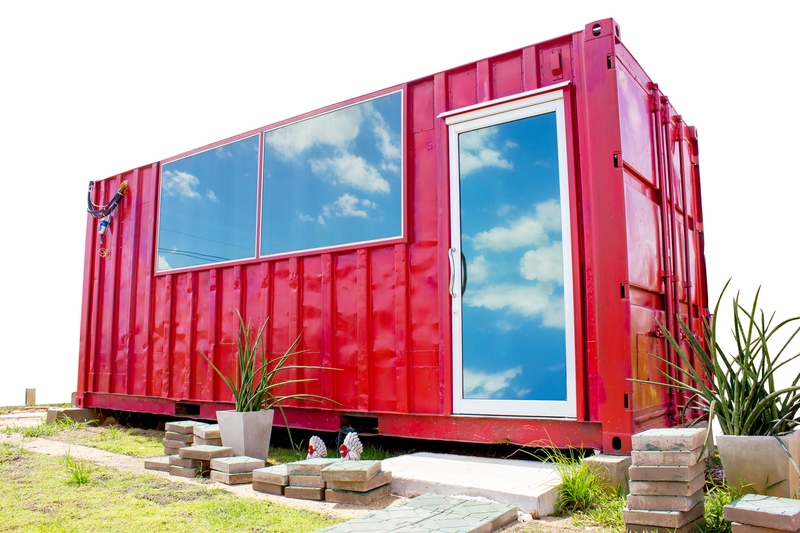How to Responsibly Get Rid of Unusable Pots and Pans
Getting rid of old, unusable cookware can often feel like a daunting chore. Whether your non-stick pans are scratched beyond repair, your aluminum pots are warped, or your stainless steel bakeware is rusted through, it's important to dispose of these kitchen items in an environmentally responsible manner. This comprehensive guide will explore the many ways you can effectively and responsibly get rid of unusable pots and pans, ensuring you minimize your environmental impact while possibly helping others or even giving your cookware new life.
Why Responsible Disposal of Pots and Pans Matters
Each year, millions of pots and pans end up in landfills. These discarded items take decades or even centuries to break down, releasing chemicals or heavy metals into the soil in the process. Reducing waste and embracing responsible disposal methods helps protect the environment and supports a more sustainable world.
- Environmental protection: Reduces unnecessary landfill waste and pollution.
- Resource recovery: Allows for the recycling and reuse of valuable metals and materials.
- Community benefit: Donating usable items or upcycling supports those in need and fosters creativity.

Signs That Your Pots and Pans Are Beyond Use
Before deciding to discard your cookware, examine if they're truly unusable. The following signs usually mean it's time to say goodbye to your old pots and pans:
- Heavily cracked, warped, or dented bodies
- Flaking, chipped, or deeply scratched non-stick coating (teflon/PFAS concerns)
- Persistent rust that cannot be scrubbed off
- Rivets or handles that are irreparably loose or broken
- Severe discoloration or pitting inside cooking surfaces
If your cookware matches any of these points, it's time to explore responsible disposal options.
Assessing Your Cookware Materials
The material of your pan or pot significantly affects your disposal choices. Here's a quick rundown of common cookware materials:
- Stainless Steel: Highly recyclable, durable
- Aluminum: Recyclable, but sometimes coated
- Copper: Valuable scrap, but often has coatings
- Cast Iron: Extremely recyclable but heavy
- Non-stick (Teflon/PTFE): Requires care due to potential toxins
- Ceramic or Enamel: Not always recyclable, often landfilled
Identifying Your Pan's Coating
Check if your pots and pans have a non-stick coating since coatings may restrict recycling. If the pan peels or flakes, it should never be reused for food for safety reasons. Most scrap metal yards and recyclers need materials with as few coatings as possible.
Best Ways to Responsibly Get Rid of Old Pots and Pans
1. Donate Usable Cookware
If your cookware is still in good condition-- no significant damage, only cosmetic wear--consider donating it. Many organizations, thrift stores, shelters, or food banks can give your lightly used pans a new home.
- Clean thoroughly before donating
- Check with local charities or non-profits for needs
- Some organizations will even pick up donations
*Remember: Do not donate damaged or unsafe cookware--only items that are genuinely usable.
2. Recycle: Metal Scrap Yards
Most pots and pans can be recycled as scrap metal. Recycling centers generally accept stainless steel, aluminum, and cast iron cookware. Remove any non-metal handles or lids, and scrape off as much non-stick or enamel as possible before recycling.
- Locate a local metal recycler using online resources or municipal websites
- Separate by metal type if you have several kinds
- Ask your recycling center if they accept coated or non-stick pans
- For copper pans, remove the lining if possible to increase value
This is the most sustainable option for disposing of truly unusable pans and pots, as it facilitates recovery and reuse of raw materials.
3. Municipal Recycling Programs
Some city recycling programs accept cookware with regular curbside pickup--especially stainless steel and aluminum pans. However, always check the rules:
- Read your local recycling guide online
- Check if you need to remove handles, lids, or non-metal components
- Many programs do not accept non-stick or ceramic cookware
When in doubt, call your local waste management facility for advice!
4. Upcycling and Repurposing Old Cookware
Give your old cookware new life! If you're feeling creative, transform unusable pots and pans into useful or decorative household items.
- Plant pots: Drill drainage holes and fill with soil for unique planters.
- Storage bins: Use large pans for organizing kitchen gadgets or craft supplies.
- Wall art: Paint or decorate old pans for quirky kitchen decor.
- Crafts: Use lids as clocks, trivets, or magnetic boards.
- Kids' toys: (For safe, metal-free items) - let children use old pots for play kitchens.
*Make sure to sand sharp edges and clean pans well before repurposing.
5. Retailer Take-Back and Manufacturer Recycling Programs
Some cookware brands and major retailers offer take-back programs to encourage responsible disposal of pots and pans:
- Trade-in events: Look out for "trade-in" campaigns or recycling drives at large retailers.
- Manufacturer mail-in: Some brands accept back their products for recycling or safe disposal.
- Specialty cookware stores often have drop-off recycling bins.
Check your cookware brand's website and local stores for current programs--you may even get a discount on your next purchase!
6. Hazardous Waste Collection (Special Cases)
Some pans and pots have coatings containing toxic chemicals, like old Teflon or non-stick surfaces with PFOA or PFAS. If you suspect your cookware has hazardous components, especially if very old, do not put them in the recycling or regular trash. Instead:
- Contact your city's hazardous waste facility
- Ask about drop-off days for household hazardous items
- Follow all safety guidelines for transporting them
This ensures potential toxins don't leach into the environment.
What Not to Do When Disposing of Pots and Pans
Being conscientious about disposal helps not only the environment but also keeps your community safe. Here are a few methods to avoid:
- Don't burn cookware-- Toxins from non-stick coatings and metals will pollute the air.
- Don't dump in the woods or waterways-- Metal pollution and microplastics cause immense harm.
- Don't place in curbside bins when not permitted-- It disrupts recycling processes and can pose a hazard to workers.
Always opt for eco-friendly and legal disposal options.
FAQ: Responsible Disposal of Old Pots and Pans
Can I put old frying pans in my curbside recycling bin?
Usually, no--most curbside programs don't accept cookware due to coatings and bulkiness. Always double check with your municipality, but in most cases, you'll need to bring them to a scrap metal recycler directly.
Where can I recycle cast iron pans?
Cast iron is highly prized at scrap yards and metal recycling facilities. Unless it contains significant wood or plastic parts, cast iron cookware is very recyclable.
How about pots and pans with plastic handles or glass lids?
Remove and recycle or discard plastic or rubber handles separately if possible. Glass lids may need to be handled as glass waste, unless your local recycler accepts cookware glass.
Can old non-stick pans be recycled?
Many recyclers do not accept non-stick cookware because of chemical coatings. Look for specialty recycling events or ask at local scrap yards if you can remove the coating first.
Should I try to repair unusable pots and pans?
If the damage is minor, sometimes a professional repair shop can replace rivets or fix handles. However, extensive coating damage or cracks usually mean it's time for responsible disposal.

Tips for Preventing Future Pot and Pan Waste
Learning how to dispose of cookware responsibly is vital, but equally important is reducing waste in the first place. Here's how to extend the life of your cookware:
- Invest in quality cookware that is repairable and made of recyclable materials
- Follow manufacturer's care instructions to avoid premature wear
- Avoid metal tools on non-stick surfaces to prevent scratches
- Handwash whenever possible to extend lifespan
- Properly dry to prevent rust and corrosion
- Consider cast iron, stainless steel, or copper for durable, repairable choices
Conclusion: Give Your Old Cookware a Thoughtful Goodbye
When it comes time to say goodbye to your unusable pots and pans, doing so responsibly ensures that you're not contributing to landfill waste or environmental harm. Whether you donate, recycle, upcycle, or use a take-back program, every choice you make helps create a more sustainable future. Examine your options, follow best practices, and let your old cookware be part of the solution-- not the problem.
Ready to get started? Review your old pots and pans today, and take pride in giving them a responsible send-off!
For more tips on eco-friendly kitchen habits, and other ways to declutter with minimal impact, explore our other articles on sustainable living.